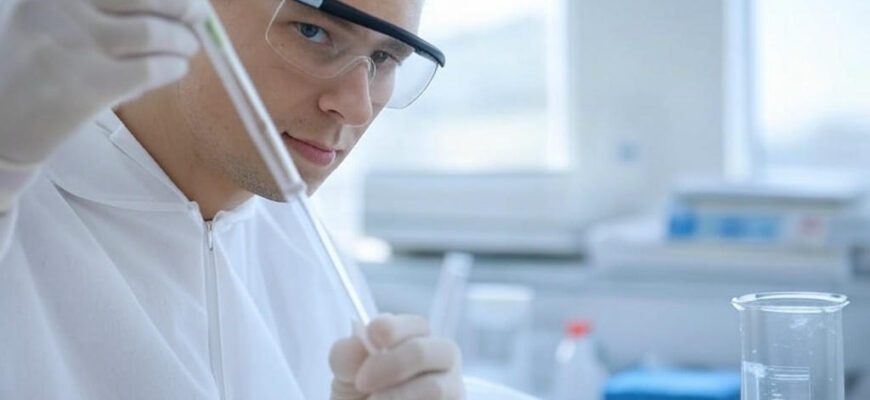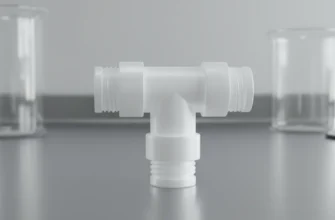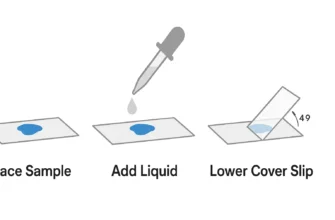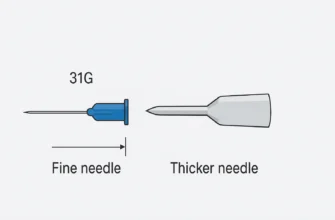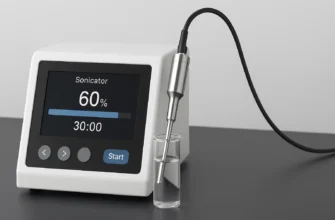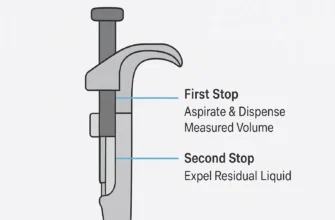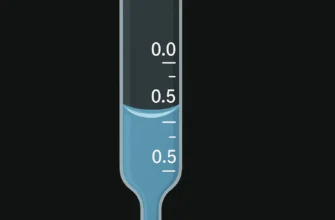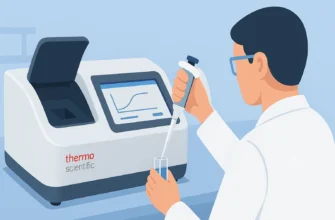Mastering Volumetric Pipettes: The Cornerstone of Precise Titration
Volumetric pipettes represent the gold standard for precision liquid handling in analytical laboratories, particularly for titration procedures where accuracy directly impacts research outcomes. This comprehensive guide explores how these specialized instruments ensure reliable results and outlines best practices for their optimal use in laboratory settings.
Understanding Volumetric Pipettes and Their Importance
What Are Volumetric Pipettes?
Volumetric pipettes are laboratory instruments specifically designed to dispense an exact volume of liquid with high accuracy. Unlike graduated pipettes with multiple measurement markings, volumetric pipettes are optimized for maximum accuracy in delivering a single, specific volume. This specialized design makes them ideal for procedures that require absolute precision in liquid handling.
Why Precision Matters in Laboratory Analysis
In analytical chemistry and biomedical research, even minor measurement errors can lead to significant deviations in results. Volumetric pipettes help minimize these errors by providing consistent and reliable measurements, making them essential tools in environments where precision is paramount. The exceptional accuracy of these instruments directly contributes to the validity and reproducibility of experimental data.
Volumetric vs. Other Pipette Types
While modern mechanical and electronic micropipettes offer convenience and adjustability, Class A volumetric pipettes remain superior in terms of accuracy for their specified volumes. For example, a Class A 1 mL pipette typically has a tolerance of ±6 μL, compared to ±8 μL for a p1000 mechanical pipette. This difference becomes crucial in analytical procedures where precision at specific volumes is essential.
Volumetric Pipettes in Titration: Ensuring Analytical Accuracy
The Critical Role in Analytical Chemistry
Titration is an analytical technique that requires exceptional precision in volume measurement. The accuracy of titration results directly depends on the precision of the volumetric instruments used. Volumetric pipettes are often employed to deliver exact amounts of analyte solutions, ensuring that concentration calculations remain reliable.
Accuracy Specifications and Standards
The 25 cm³ volumetric pipettes commonly used in educational and professional laboratories are typically grade B standard, with an accuracy of approximately ±0.6 cm³. This means that when used correctly, a 25 cm³ pipette will deliver between 24.40 cm³ and 25.60 cm³. Class A pipettes, used in more demanding analytical work, offer even greater precision.
Impact on Experimental Results
The precision of volumetric pipettes directly affects the calculation of concentrations and determination of endpoints in titration. For instance, in acid-value determination or Karl Fischer titration, the accuracy of the initial volume measurement is critical to obtaining reliable results. Even small volumetric errors can significantly impact the final analysis, potentially compromising research integrity.
Types of Volumetric Pipettes and Their Applications
Class A Single Flush Volumetric Pipettes
These pipettes are designed for maximum accuracy in measuring liquid volumes. Manufactured to ISO 648 standards, they feature a single gauging mark and are calibrated for total discharge, ensuring that the exact indicated volume is delivered. They are ideal for analytical procedures requiring the highest level of precision.
Class A Two-Phase Volumetric Pipettes
Two-phase volumetric pipettes provide precise measurement using two calibration marks. This design makes it easier to achieve accuracy in procedures where two specific volume points are required. They offer versatility while maintaining the high precision expected of Class A instruments.
Serological Pipettes
Though not strictly volumetric pipettes, serological pipettes deserve mention as they are graduated tools commonly used with pipette fillers or controllers. They typically range from less than 1 mL to 50 mL and are essential in various laboratory applications, including cell culture and reagent preparation.
Best Practices for Using Volumetric Pipettes
Understanding TD vs. TC Calibration
Volumetric pipettes are typically calibrated either “To Deliver” (TD) or “To Contain” (TC). For TD pipettes, which are most common, the calibration accounts for the residual liquid that remains in the tip after dispensing. This small amount should not be blown out. Conversely, TC pipettes require complete expulsion of all liquid to achieve the stated volume.
Pre-Wetting Technique
After installing a pipette tip, aspirate the selected volume of liquid and dispense it back into the source container. This pre-wetting helps achieve accuracy by allowing the second aspiration—the liquid you actually transfer—to be completely dispensed from the tip. This technique is particularly important when working with volatile or viscous liquids.
Proper Aspiration and Dispensing Angles
Angles play a critical role in maximizing pipette performance. For optimal results, aspirate at a vertical 90° angle but dispense at a 45° angle with the tip touching the side of the receptacle. This approach helps ensure complete delivery of the liquid without introducing bubbles or leaving residue in the tip.
Aspiration Depth Considerations
During aspiration, submerge your pipette tip no more than 1-2mm below the surface of the liquid to avoid adhesion of liquid to the outside of the tip. Improper immersion depth can lead to excess liquid being transferred, compromising measurement accuracy.
Consistent Speed and Pressure
Use a smooth, controlled speed when aspirating and dispensing liquid. As one experienced lab professional advised, “Slow is smooth; smooth is fast”. Consistent pressure and technique help ensure reliable and repeatable results across multiple measurements.
Proper Technique for Using Pipette Fillers
Step-by-Step Guide to Using a Pipette Filler
-
Secure the appropriate pipette filler onto the top of the volumetric pipette
-
Draw a small amount of liquid into the pipette to remove any air bubbles
-
Insert the pipette tip into the liquid you intend to transfer
-
Use the filler to gently draw liquid up into the pipette, ensuring the level is above the target volume
-
Adjust the liquid level to the exact volume needed by carefully releasing excess liquid
-
Position the pipette tip over the receiving vessel
-
Allow the liquid to drain naturally for TD pipettes, or expel completely for TC pipettes
Avoiding Common Errors
A frequent mistake among beginners is lifting the pipette out of the liquid too quickly when stopping aspiration, which can suck air into the pipette and contaminate the sample. Additionally, many users fail to allow sufficient time for viscous liquids to fully rise in the pipette, leading to inaccurate volume measurements.
Special Considerations for Different Liquids
Different liquids require adjusted techniques:
- For viscous liquids: Use slower aspiration and allow more time for the liquid to settle in the pipette
- For volatile liquids: Minimize exposure time and consider using pipettes with filters to protect from vapor contamination
- For sterile applications: Maintain aseptic technique throughout the procedure
Maintenance and Calibration of Volumetric Pipettes
Regular Maintenance Protocols
Proper maintenance ensures long-term accuracy and reliability. Clean pipettes regularly after use, especially when working with corrosive or viscous substances. Inspect for damage or wear, particularly around seals and tips where leakage might occur.
Calibration Frequency and Importance
Regular calibration is essential for ensuring pipette accuracy. In professional laboratories, pipettes should be calibrated externally approximately every six months. However, more frequent calibration may be necessary for critical applications or after intensive use.
DIY Calibration Verification Steps
For basic calibration verification:
-
Gather necessary materials, including an analytical balance and distilled water
-
Record the water temperature for Z-factor correction (see table below)
-
Pre-rinse pipette tips to equilibrate
-
Weigh dispensed water multiple times and calculate volume using the appropriate Z-factor
-
Compare to expected volume and determine if professional calibration is needed
| Temperature (°C) | Z-factor |
|---|---|
| 15 | 1.0019 |
| 18 | 1.0025 |
| 20 | 1.0029 |
| 22 | 1.0033 |
| 25 | 1.0039 |
Troubleshooting Common Pipetting Issues
Identifying Sources of Error
Common errors include inconsistent technique, improper angle, failure to pre-wet tips, and incorrect depth of immersion. Temperature variations can also significantly impact accuracy, as pipettes are typically calibrated at 20°C.
When to Use Alternative Methods
While volumetric pipettes offer exceptional accuracy for their calibrated volumes, they may not be suitable for all applications. For very small volumes (below 1 mL), mechanical or electronic micropipettes often provide better precision. Similarly, for viscous or volatile liquids, positive displacement pipettes may be more appropriate.
Working with Challenging Samples
When working with organic solvents, consider using pipette tips with filters to protect the internal mechanisms from solvent vapor. For highly viscous solutions, reverse pipetting (where you pull up liquid from the second stop) provides a liquid cushion that enables more accurate dispensing.
Mastering Precision in Laboratory Analysis
Volumetric pipettes remain the gold standard for accuracy in liquid measurement, particularly in analytical procedures like titration where precision directly impacts results. By understanding the proper techniques, maintenance protocols, and calibration procedures outlined in this guide, laboratory professionals can ensure the highest level of accuracy in their work.
Whether you’re performing complex analytical chemistry or basic laboratory procedures, mastering volumetric pipettes will significantly enhance the reliability of your results. The time invested in developing proper pipetting technique pays dividends in experimental reproducibility and scientific integrity.
In an era of increasingly sophisticated laboratory automation, the fundamental skill of precise manual pipetting remains invaluable. By following the best practices detailed in this guide, you can achieve the level of precision that defines excellent laboratory work.

